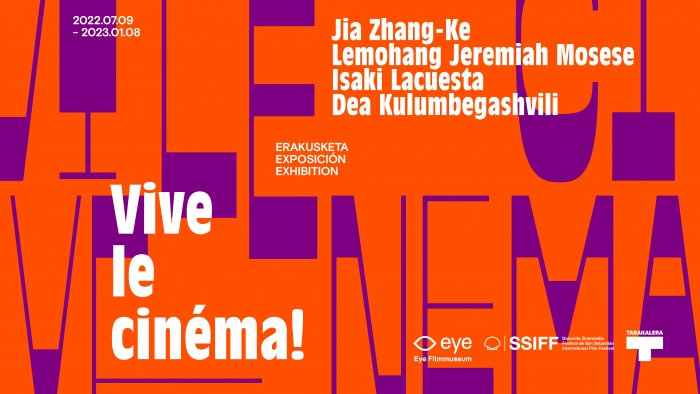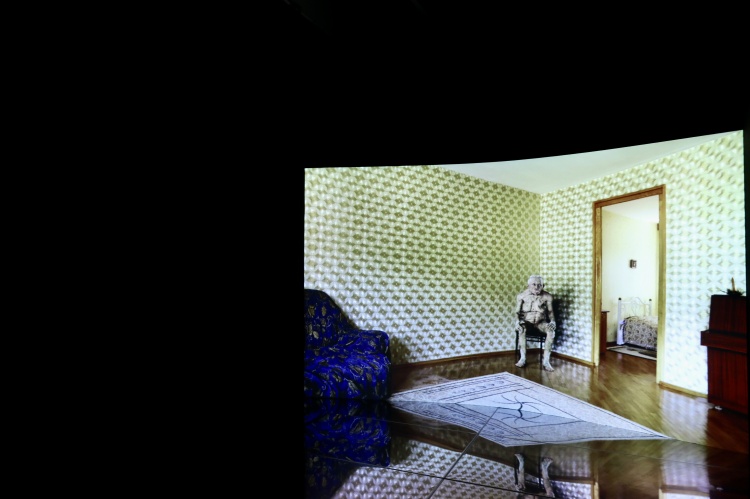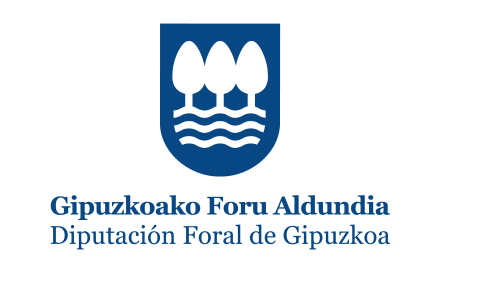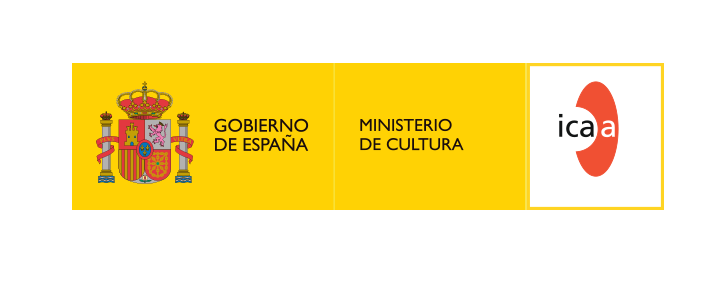The exhibition is the result of the co-production of Tabakalera with Eye Filmmuseum in Amsterdam and the collaboration of the San Sebastian Film Festival
It will open to the public tomorrow and can be visited until 8 January 2023
Tabakalera launches Vive le cinéma!, an exhibition that explores the limits of cinema and presents the audiovisual creations of film directors Dea Kulumbegashvili, Isaki Lacuesta, Lemohang Jeremiah Mosese and Jia Zhang-ke; four filmmakers who have adapted their usual practice of making films for cinema to creating cinematographic installations for an exhibition hall. The four internationally-renowned filmmakers have responded to Tabakalera's invitation to participate in an exhibition through an audiovisual installation. The exhibition is the result of the co-production of Tabakalera with Eye Filmmuseum in Amsterdam and the collaboration of San Sebastian International Film Festival, and can be visited from 9 July 2022 until 8 January 2023 in the main exhibition room on the first floor of the International Centre for Contemporary Culture.
In Vive le cinéma!, each filmmaker has captured light and sound to address different themes: life and death, the political and the quotidian, and a body's presence or absence. In addition, the cinematographic device itself is reinvented through the application of technology more closely associated with artistic practices, to enhance the film experience. It is increasingly common to see films in exhibition halls or audiovisual pieces in a movie theatre, as it is also usual to see results from the convergence of both disciplines. The crossroads between cinema and exhibitions produces a new space-timerelationship. Space, because the cinema screen's static and two-dimensional canvass is transformed, into the exhibition space, into a three-dimensional experience where the observer can move through. Time, because there is no beginning nor end, as the moving images are projected in the exhibition halls non-stop.
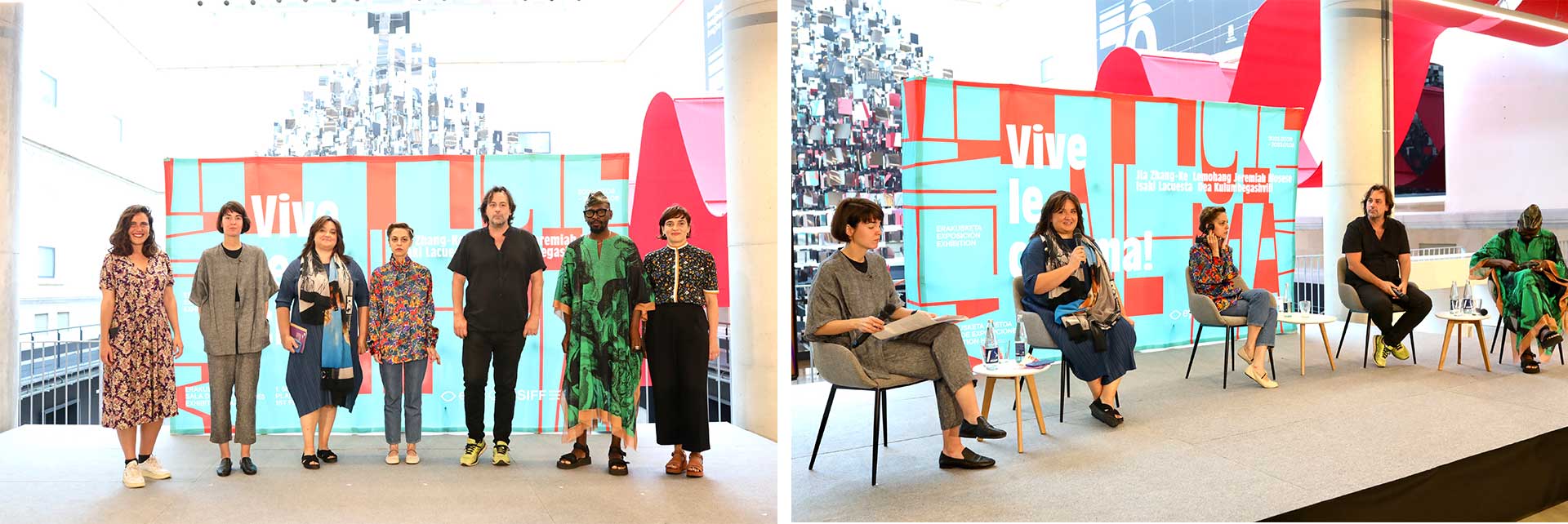
Rediscovering cinema beyond the screen
The idea underlying the exhibition is the rediscovery of cinema and the way in which light and sound extend beyond the screen. New forms of "expanded cinema", of watching, listening, and experimenting, play a fundamental role in the works of the four artists throughout the exhibition. Of the four proposals that make up the exhibition, two, those by Mosese and Jia Zhang-ke, were presented at the Eye Filmmuseum in Amsterdam, a prominent European institution with which Tabakalera has collaborated to set up this exhibition. On the other hand, those by Lacuesta and Kulumbegashvili have been expressly produced for this exhibition.
Dea Kulumbegashvili (Georgia, 1986) is considered to have oneof the most interesting perspectives in today's cinematographic panorama. Her first feature-length film, Beginning (2020), received the 4 most important awards at the San Sebastian Film Festival in 2020: Golden Shell for Best film, Best director, Best screenplay and Silver Shell for best actress. She is heavily influenced by Georgia's cultural, ethnic, and religious diversity, with her films seeking to paint a portrait of the nation's different realities through characters where female roles receive special attention.
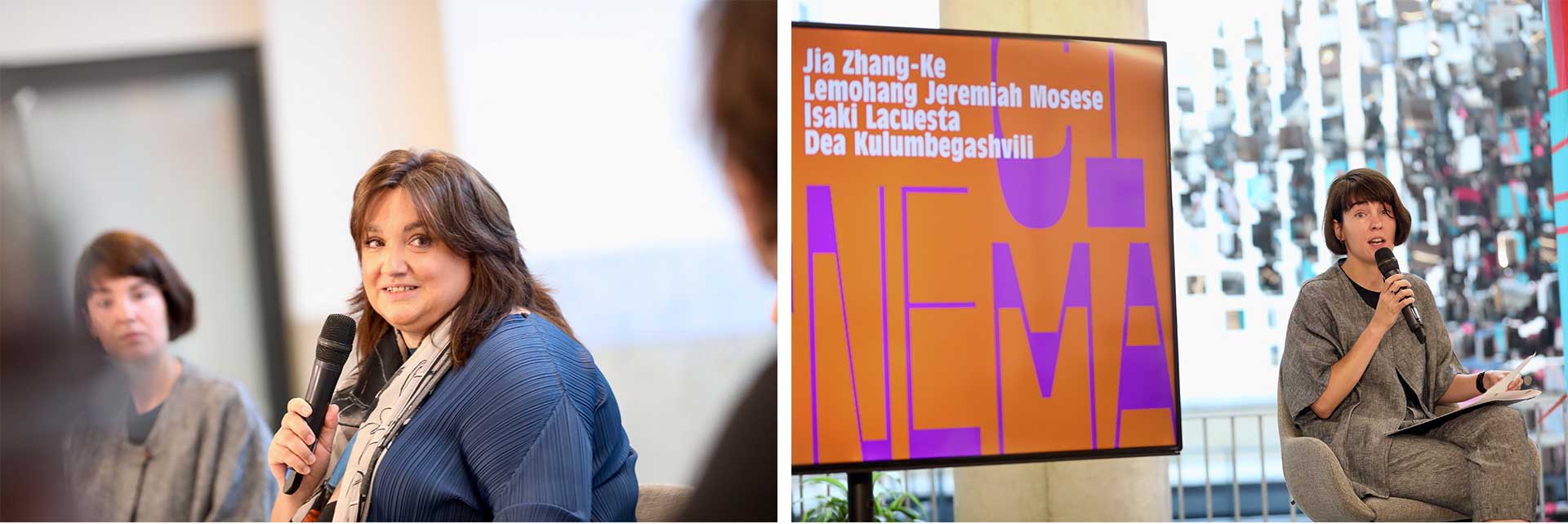
Captives, Kulumbegashvili's proposal for the exhibition,is designed as an immersive audiovisual installation that invites the public to enter into an on-screen character's deeply intimate space. The work seeks to question the meaning of representation, the relationship between what is human and what is not, as well as the connection between these two ways of being. In its essence, the work is a study of the act of watching and explores the underlying narrative that arises between the spectator in the physical space and the presence of the other on screen. Sound becomes hugely relevant in the installation, which has been developed by Kulumbegashvili during an artistic residency in Tabakalera's Artists' Space throughout the year 2021.
Isaki Lacuesta, winner of the Golden Shell of the San Sebastian Film Festival for Los pasos dobles / The Double Steps (2011) and Entre dos aguas / Between Two Waters (2018) is one of the most important contemporary film directors at international level. In 2018, the Centre Georges Pompidou in Paris dedicated an entire retrospective to his work and published a book on him entitled Le cinéma d'Isaki Lacuesta (Brice Castanon and Sergi Ramos, ed). He has just presented his latest full-length feature film, Un año, una noche (2022),in the Official Selection of the Berlinale. In Vive le cinéma! he presents Prohibimos en España. Censuras, prohibiciones y denuncias en la España democrática (1977-2022) (In Spain we Prohibit. Censorship, Prohibitions and Accusations in Democratic Spain, 1977-2022), an installation that consists of a cube covered in mirrors that must be visited individually and where there are close to a hundred cases of censorship and the prohibition of ideas and images in Spain. In parallel, an audio track in the room plays the answers 26 musicians gave to the question: "Can you sing something that can't be sung in Spain?" Answering the question are musicians such as Albert Pla, Christina Rosenvinge, Fermin Muguruza, Gran Wyoming, Kiko Veneno, La Basu and Soleá Morente, among others.The work is presented as a map of censorship and its imaginaries, because in Lacuesta's opinion there is no better way to understand society than by addressing everything it rejects for itself.
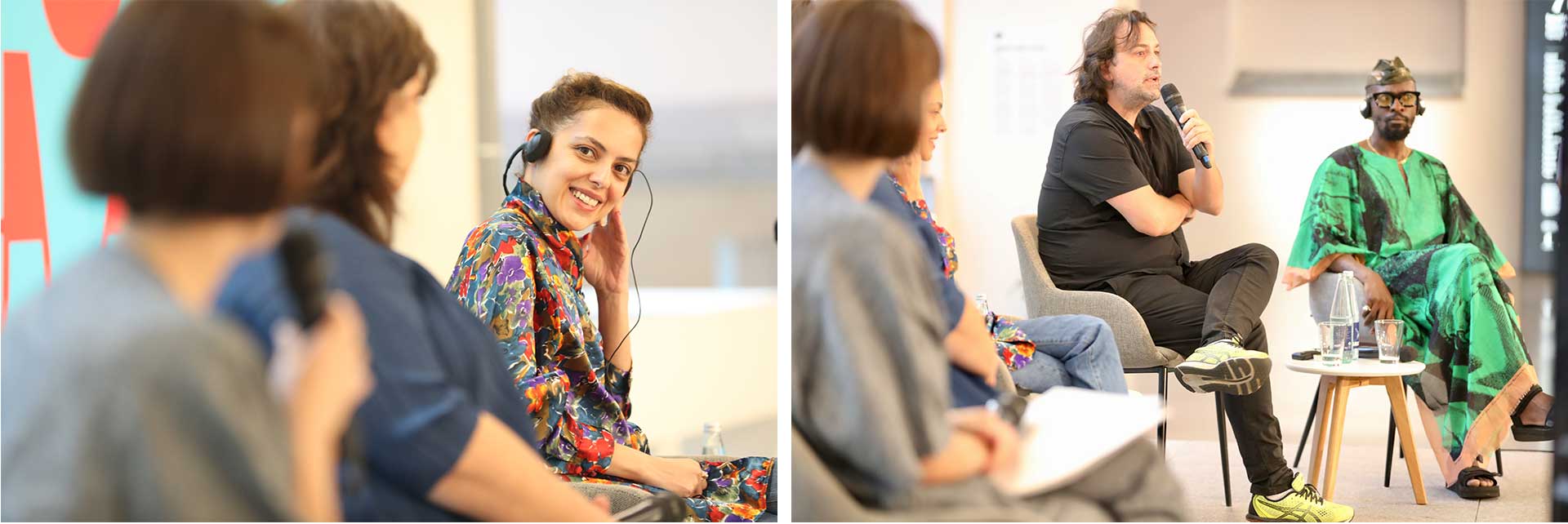
Lemohang Jeremiah Mosese (Lesotho, 1980) is one of the most innovative and prestigious voices in African filmmaking today. He belongs to a generation of filmmakers whose work questions the stereotypes surrounding the continents films and develops a new visual imaginary to tell their stories. In his films, Mosese often processes his own childhood memories and investigates how religions that originated in Europe influence postcolonial societies. His work is shown within the "white" spaces, but has little to do with whiteness and more to do with Africanness and blackness.
In his piece Bodies of Negroes. I Will Sculpture God, Grim and Benevolent, Mosese returns to his native land, Lesotho, to celebrate the beauty of black female bodies from a sensory perspective that the spectator can immerse themselves in thanks to the six screens comprising the installation presented in the exhibition. On the screens we see 11 black daughters who care for their dying mother. We see how they wash her face, her body, her feet. However, the more they wash their mother, their actions become more ritualistic, they become a way of cleaning their own transgressions.
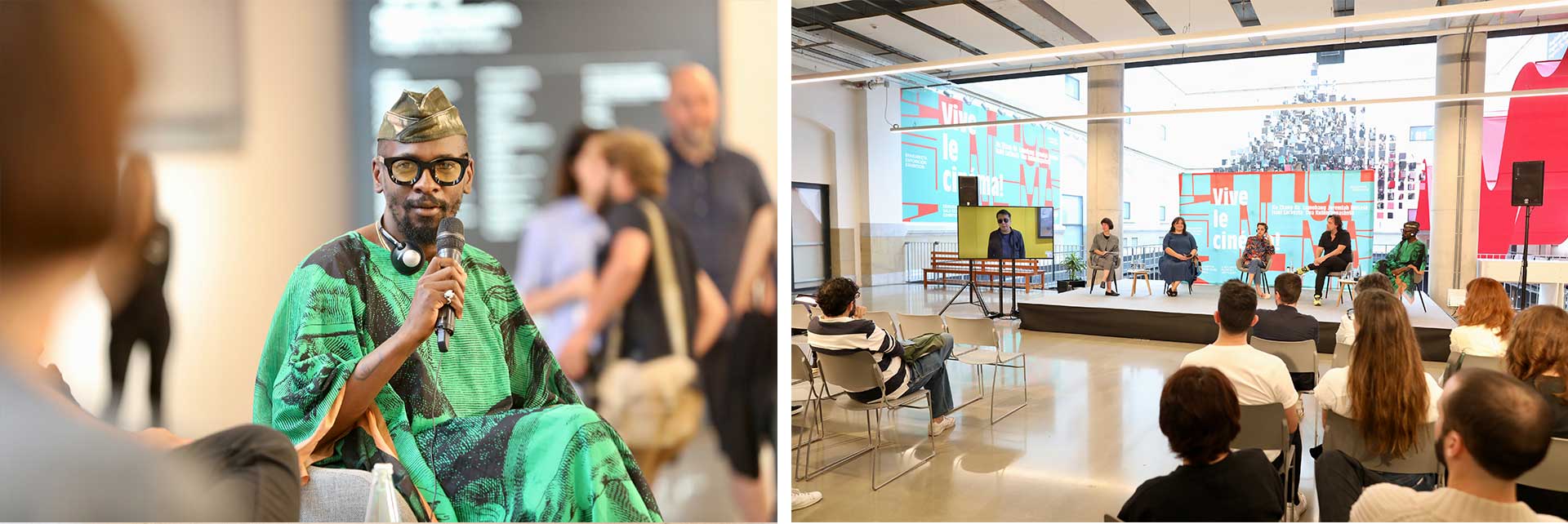
Jia Zhang-ke (China, 1970) represents the voice of today's independent Chinese film. In 2015 he received the Audience Award at the 63rd edition of the San Sebastian Film Festival for his film Shen he gu ren/Mountains May Depart. In 2017 he launched the Pingyao International Film Festival and in 2019 he founded the Lüliang Literature Festival. Zhang-ke participates in Vive le cinéma! With Close-Up, a multi-screen intervention based on the ubiquity of surveillance cameras. In today's China, every corner in cities or towns are full of CCTV surveillance cameras. There are barely any blind spots in public spaces. These cameras are called "eyes in the sky" and are the biggest producers of images. However, individuals become "unspecific" and "insignificant" among these wide-angle surveillance images.
In Close-Up, four cameras scan a traffic intersection with a big flow of moving people, while a fifth camera focuses on an injured man. What starts as a long shot becomes a close-up shot which allows visitors to follow the story of this individual, and to see how the cameras observe, control, constrain, frame and direct, at the same time, the public's view of the exhibition. By opposing the overabundance of surveillance images with the filmmaker's observation of a single person, Jia Zhang-Ke defends film's capacity for a close-up observation of the individual, and with it, of the human condition.
As an introduction to the four installations, the exhibition offers video-essays on the filmography of each artist. In the case of Kulumbegashvili and Lacuesta, the authors of the video-essays have been Basque filmmakers Irati Gorostidi and Maider Oleaga, who have each created audiovisual pieces on the way the two directors make films.
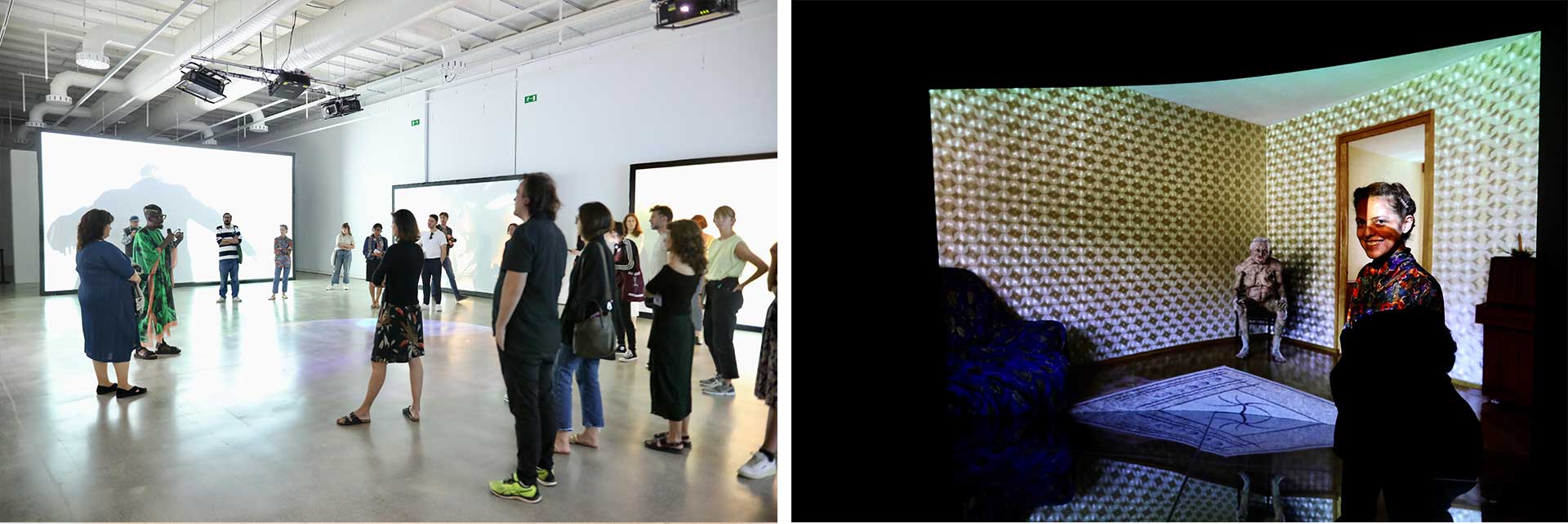
Public programme of activities
With the launch of Vive le cinéma!, Tabakalera dedicates itself to the 70th anniversary of the San Sebastian Film Festival and completes its offer of exhibitions for the upcoming months, after the inauguration of Imagine a festival, along with the San Sebastian Film Festival, and the launch next 14 July of the new proposal by Scala on the main staircase of Tabakalera, where filmmaker Carlos Casas will propose a new sound installation entitled Mutia.
Vive le Cinéma! will be accompanied by a programme of activities in which we could highlight, on the one hand, a series of screenings of the directors featuring in the exhibition, which will be offered throughout next autumn. Likewise, in November VII International Film Seminar will be held, with a three-day programme to think about and debate on film and which will be attended by the exhibition's four artists, in addition to the artists Rabih Mroué, Alex Reynolds, Maddi Barber and Mirari Echávarri. In addition, in September a new edition of Arte-makina will be launched, a course that aims to bring contemporary art closer to the public. There will also be the usual art workshops for families, Kamaleoiak gara!, and the guided tours of the exhibition.

